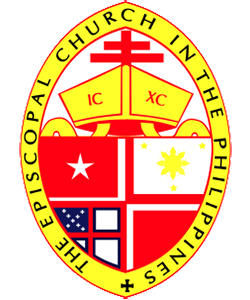
Metropolitan Manila, commonly shortened to Metro Manila and formally the National Capital Region, is the capital region and largest metropolitan area of the Philippines. Located on the eastern shore of Manila Bay, the region lies between the Central Luzon and Calabarzon regions. Encompassing an area of 619.57 km2 (239.22 sq mi) and with a population of 13,484,462 as of 2020, it is composed of sixteen highly urbanized cities: the capital city, Manila, Caloocan, Las Piñas, Makati, Malabon, Mandaluyong, Marikina, Muntinlupa, Navotas, Parañaque, Pasay, Pasig, Quezon City, San Juan, Taguig, and Valenzuela, along with one independent municipality, Pateros. As the second most populous and the most densely populated region in the Philippines, it ranks as the 9th most populous metropolitan area in Asia and the 6th most populous urban area in the world.

Quezon City, also known as the City of Quezon and Q.C., is the most populous city in the Philippines. According to the 2020 census, it has a population of 2,960,048 people. It was founded on October 12, 1939, and was named after Manuel L. Quezon, the second president of the Philippines.

Taguig, officially the City of Taguig, is the fifth-most populous city in the Philippines with a population of 1.2 million people. The city is one of the Philippines' cultural, financial, high-tech, entertainment and media centers with significant influence on commerce, health care, research, technology, education, politics, tourism, dining, art, fashion, and sports. Taguig is also an important center for the country's international diplomacy, hosting several embassies. It is also home to the headquarters of several major multinational corporations.

Taytay, officially the Municipality of Taytay, is a 1st class urban municipality in the province of Rizal, Philippines. It is also known as the Garments Capital of the Philippines.

Felix Y. Manalo , also known as Ka Felix, was the first Executive Minister of Iglesia ni Cristo. Members of Iglesia Ni Cristo believe that Felix Manalo is the last messenger of God. He is the father of Eraño G. Manalo, who succeeded him as Executive Minister of the INC, and the grandfather of Eduardo V. Manalo, the current Executive Minister of Iglesia ni Cristo.

Protestant denominations arrived in the Philippines in 1898, after the United States took control of the Philippines from Spain, first with United States Army chaplains and then within months civilian missionaries.

Trinity University of Asia, also known as TUA or simply Trinity, is a non-sectarian private university located in Quezon City, Philippines. It was named after Trinity College (Connecticut) whose president then was the founder's father. Formally established in 1963 as an elementary, high school and collegiate educational institution by the Protestant Episcopalians, it dates back its earliest establishment in 1907 when the Trinity University of Asia - St. Luke's College of Nursing, its oldest organic academic unit, was established under the St. Luke's Hospital, the present day St. Luke's Medical Center. It later acquired its university status on July 18, 2006.

The Episcopal Church in the Philippines is a province of the Anglican Communion comprising the country of the Philippines. It was established by the Episcopal Church of the United States in 1901 by American missionaries led by Charles Henry Brent, who served as the first resident bishop, when the Philippines was opened to Protestant American missionaries. It became an autonomous province of the Anglican Communion on May 1, 1990.

Charles Henry Brent was the Episcopal Church's first Missionary Bishop of the Philippine Islands (1902–1918); Chaplain General of the American Expeditionary Forces in World War I (1917–1918); and Bishop of the Episcopal Church's Diocese of Western New York (1918–1929). The historian and Episcopal minister Frederick Ward Kates characterised him as a "gallant, daring, and consecrated soldier and servant of Christ" who was "one of modern Christendom's foremost leaders, prophets, and seers."

St. Luke's International Hospital (聖路加国際病院) is a general and teaching hospital located in the Tsukiji district of Chūō, Tokyo, Japan.

The United Church of Christ in the Philippines is a Christian denomination in the Philippines. Established in its present form in Malate, Manila, it resulted from the merger of the Evangelical Church of the Philippines, the Philippine Methodist Church, the Disciples of Christ, the United Evangelical Church and several independent congregations.

Nicolás Villegas Zamora was a Methodist minister who is credited with the foundation of the first indigenous evangelical church in the Philippines, known as the Iglesia Evangelica Metodista en las Islas Filipinas. Zamora is also recognized as the first native Filipino Protestant minister in the Philippines.
Albert Ervine Swift was a bishop of the Episcopal Church in the United States of America.

St. Luke's Medical Center – Global City is a hospital at the Bonifacio Global City in Taguig, Metro Manila, Philippines. It is the sister facility of the hospital of the same name in Quezon City. Both are affiliated with the Episcopal Church of the Philippines.

St. Luke's Medical Center – Quezon City is a hospital in Quezon City, Metro Manila, Philippines. Forming as a part of St. Luke's Medical Center group of hospitals, it was founded in 1903 by the American missionary Charles Henry Brent under the Protestant Episcopal Church in the United States of America (PECUSA) as the third oldest American and Protestant hospital in the Philippines after CPU–Iloilo Mission Hospital and Silliman University Medical Center.

The Cathedral of St. Mary and St. John is an Anglican church in Quezon City, Metro Manila, Philippines. It serves as the National Cathedral of the Episcopal Church in the Philippines.

The Silliman University Medical Center, also known as Silliman Medical Center or simply referred to as SU Medical Center or SUMC, is a private tertiary, teaching and academic hospital in Dumaguete, Philippines. Established in 1903 as the Dumaguete Mission Hospital under the auspices of the Presbyterian Foreign Mission Board from the United States by the American missionary doctor Henry Langheim, it is the second oldest American and Protestant founded hospital in the country after CPU–Iloilo Mission Hospital in Iloilo City, the university hospital of Silliman's sister school, Central Philippine University.



















